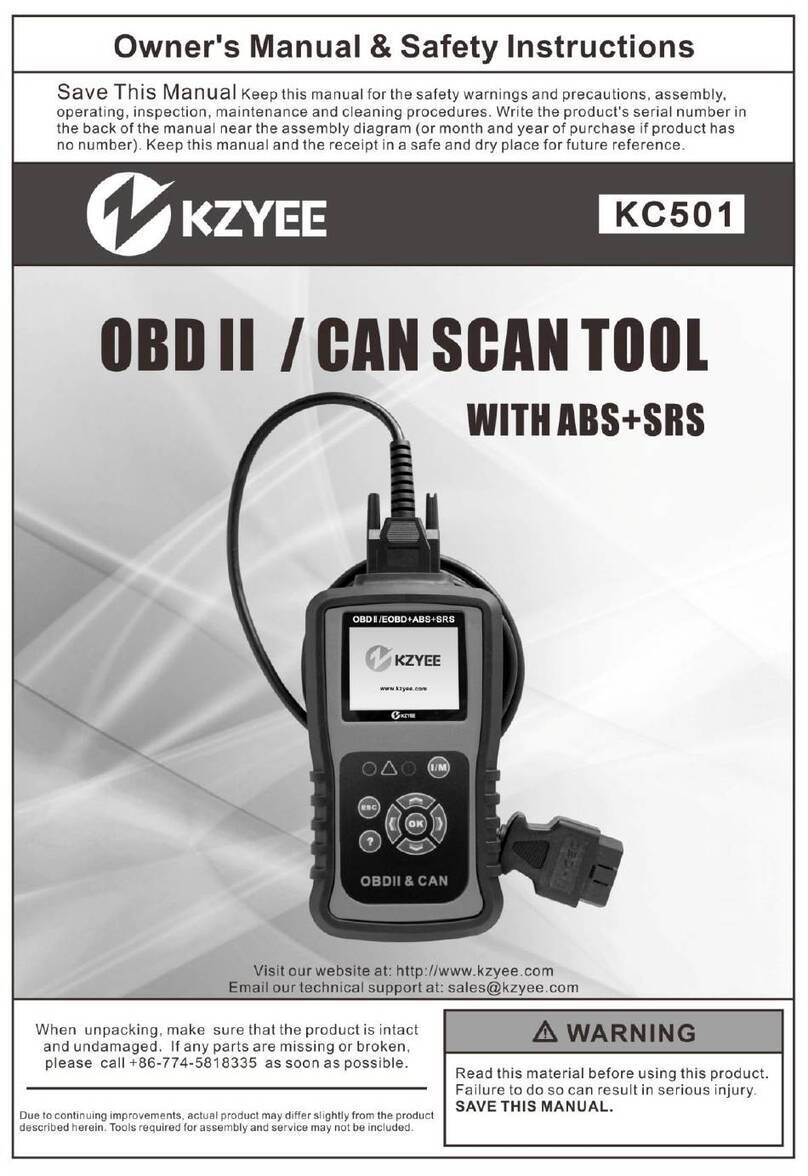
Multisystem Ignition Analyzer
- 2 -
1. IMPORTANT SAFETY INFORMATION
◆This instrument can be used indoor, the temperature should between 32℉and
104℉( 0℃and 40℃), altitudes up to 6500 ft ( 2,000 meters ).
◆In order to use the instrument safely, please follow all the safety and operating
instructions of this manual to operate. The security feature of this instrument will be
impaired if not following the manual to operate.
◆If this instrument, the capacitive pick-up or the flexible probe looks damaged, or
you suspect that the instrument is operating abnormally, please do not use it under
the circumstances.
◆In order to avoid personal injury and damage to the instrument, capacitive pick-up
or flexible probe, please keep away from the moving parts ( fan, transmission belts
etc.) and hot objects (exhaust pipe, muffler, catalytic converter, etc) when using the
instrument.
◆Please do not connect or apply more than 42 VDC or any AC current to the
capacitive pick-up or the flexible probe.
◆When operate the circuit above 60 V DC or 25 V AC, to avoid electrical shock,
please be careful at any time. Because such voltage may cause shock hazard.
◆Please do not operate the instrument when the battery cover is off.
◆In order to avoid electrical shock or damage to the instrument, please do not
exceed the specified input limits.
When using this instrument, if exceeding the above limitation or not paying attention
to the precautions, it may cause personal injury or permanently damage to the
instrument or the vehicle under test.
2. TECHNICAL SPECIFICATIONS
2.1 General Specifications
Display: LCD 128 x 64 digits screen.
Update rate: 3 per second ( for LCD).
Ignition system comp.: Coil on plug, coil near plug, DIS, conventional and magneto.
Engine cycles: 2 and 4 cycles and DIS (distributorless ignition system).
Power: 9 Volt battery.
Auto power off: Automatically powers off after 3 min. of no operation.
Battery life: Approximately 20 hours (w/alkaline battery).
Probe length: 35 cm, Including capacitive pick-up.
Dimensions: 165x100x32 mm without antenna.
Weight: Approximately 0.363 kg (Including battery).
Included accessories: Padded hard carrying case, user’s manual, rubber holster
and 1x9 Volt alkaline battery.
2.2 Electrical Specifications
◆The specifications below are in the standard 23℃environment, there will be
slight difference between different equipments and temperatures. To avoid personal
injury or damage to the instrument, the input voltage should not exceed the specified




























